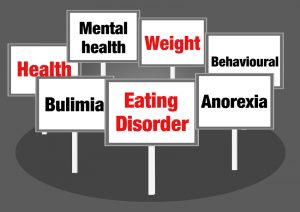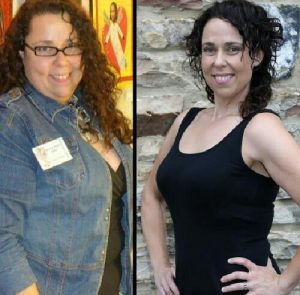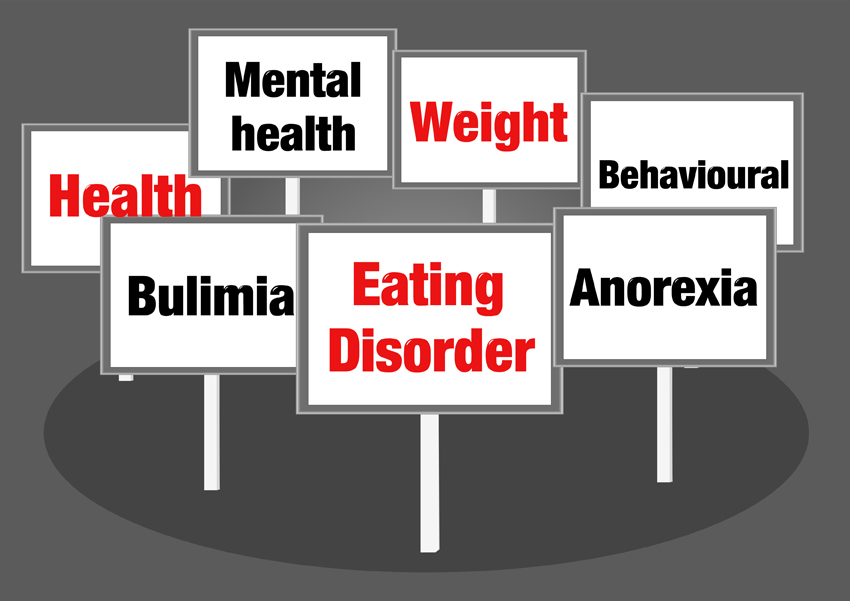Top Ten Things a Personal Trainer Should Know About Working with Eating Disorders
Having worked as a certified personal trainer and strength and conditioning specialist early in my career, and now as a certified specialist in sport dietetics who specializes in treating clients with eating disorders who are often over-exercising, I feel it is critical for trainers to have some training about how to deal with their clients with these issues because you will be seeing these clients. Given eating disorders can present as over-exercise and under-fueling, a personal trainer is in a position to be the first identifier of these issues and can be a key player on an eating disorders treatment team. I often utilize personal trainers to help these clients develop exercise limits, boundaries, or assist with reiterating the “fueling and hydrating” messages the dietitian may be providing the client. I have helped in developing a new tool available to those who work in the fitness and coaching field called Running on Empty,an online eating disorders awareness and prevention program for coaches and exercise professionals, through a non-profit eating disorders outreach and prevention organization, Eating Disorders Information Network. I have also invited one of our recovery speakers to share her tips in this article. She is both an ACE certified personal trainer and a recovery speaker for EDIN. She, Kristy Wegert, shares her thoughts as a professional who currently treats clients who are on their recovery path.
A key reference on this topic is the new International Olympic Committee’s position statement on RED-S, Relative Energy Deficiency in Sport. Many of us will work with people with sub-diagnostic cases of eating disorders who may present with many of the negative energy balance physical issues discussed in this consensus statement. Working with an exercising population means helping this population stay in energy balance or eating appropriately to fuel for the level of activity in which they are engaging without harming the body because of lack of energy for basic body systems to function. All body systems are affected when limiting the body to too little energy to function fully, including the systems visually represented below. It is the job of the eating disorders treatment team, including the exercise professionals, to be aware of this set of possible consequences and treat/refer to treatment accordingly.

A sport dietitian’s top 5 tips for working with the exercising client with an eating disorder:
1. Keep your client in energy balance by reminding them about appropriate fueling, recovery, and hydration. Complex carbs rule before exercise. Encourage your clients to fuel on these before they train vs. training on empty. Common “on the go” examples of this can be as simple as a slice of toast or a higher carbohydrate energy bar. Encourage your client to drink hydrating fluids and even an electrolyte beverage during their training session with you. Also, most active clients need to drink 4 oz. of fluids every 15 minutes. Encourage your client to take these breaks. Encourage your clients to have a protein recovery choice within 15-45 minutes after they finish their workout. This could be a glass of chocolate milk or a smoothie with protein.
2. Encourage and educate your clients with a non-diet mentality. This means “All Foods Fit” and that there are “No Bad Foods.” All foods have some energy value and can fit into our performance plan. In fact, when we exercise, we have need to eat more energy. If we adapt the mentality that all foods fit, then we will have less chance of sabotaging ourselves with exercise or restriction. Check out the references Moving Away from Diets by King, Katrina, and Hayes and Intuitive Eating by Tribole and Resch for more on this way of working with clients.
3. Be aware of different types of eating disorders or disordered eating that may present to you. An individual with Binge Eating Disorder may be a common client seeking a trainer’s help for weight loss. Be sensitive to this type of client’s energy needs, orthopedic limitations, and potential resistance to traditional exercise and Health at Any Size®.
4. If you must take any anthropometrics, make sure you discuss amongst the team who is the best person to take those measurements.Often the dietitian is the best fit on the team to do this, to discuss these results, and to comment on realistic body weight ranges and appropriate food intake to fuel activity with a sport nutrition approach in a way that is focused away from calories.
5. Set reasonable boundaries on movement to include at least 2 rest days per week; sessions not exceeding 1 hour in duration; alternate cardio and strengthening to not over-exercise; consider cross training or varying types of activities to lower risk of over-training (such as outside, non-gym activities like road biking, climbing, kayaking, etc.); encourage gentle and restorative activities during the week as well, like yoga, barre, and Pilates; support varying types of classes (dance, kickboxing, karate, etc.) that have appropriate warm-ups and cool downs and are led by a certified instructor; and lastly, exercise with others who have reasonable exercise boundaries to give one appropriate containment and normal exercise boundaries.
A personal trainer’s top 5 tips in working with an exercising client with an eating disorder:
 1. Exercise will bring up past trauma in the body. It can get emotional. Be prepared for some distress and perhaps, some crying. Hence, it is important to consult with the treatment team so you are prepared and can offer the appropriate type of support.
1. Exercise will bring up past trauma in the body. It can get emotional. Be prepared for some distress and perhaps, some crying. Hence, it is important to consult with the treatment team so you are prepared and can offer the appropriate type of support.
2. Don’t assume that a small person is weak; that a larger person cannot move or has never worked out; that someone in a larger or smaller body doesn’t purge. Bottom line…never assume. Check out the Health at Any Size® movement to learn more about this mindset.
3. Offer privacy when possible. Many people in early recovery feel awkward in their own bodies. Try to help them feel as comfortable as they can during a workout. This may mean taking them out of the traditional exercise environment and away from mirrors, or going outside.
4. Get written permission to speak with therapists, doctors, dietitians, sponsors, partners, and parents. People who are in recovery from anorexia, bulimia, binge eating disorder, and OSFED need well-defined, appropriate boundaries and you may need help from the treatment team in determining this. People who are in recovery need a team to help them.
5. Fitness is about function, healthy lifestyle, and feeling good. No matter what the client asks for, focus away from aesthetics. Have fun! Exercise should be a good time for your clients. Help them have a positive experience!
This article was co-written by Page Love, Vice President of the Board for Eating Disorders Information Network (EDIN) and Kristy Wegert, recovery speaker for EDIN. Originally printed on ED Resource Catalog. Reprinted with permission.
 Page Love is a registered dietitian, certified specialist in sport dietetics and nutrition therapist, and runs a thriving private practice specializing in eating disorders nutrition therapy, sports nutrition, and weight management nutrition counseling in Atlanta, Ga. She served as a clinical dietitian for Atlanta Center for Eating Disorders for 20 years and has run ANAD groups in Atlanta for 25 years, and has served as a consultant to The Renfrew Center and Veritas Collaborative. She has developed materials for the NEDA, Renfrew Center, and EDIN and has been published in the Renfrew Perspectives, International Journal of Sport Nutrition, and International Journal of Sport Science for Tennis Medicine. She currently serves as the Vice-President of the board for EDIN, Eating Disorders Information Network. She also serves as a consultant for the International Women’s Professional Tennis Tour (WTA) and the Men’s Tour, Association for Tennis Professionals (ATP), the Atlanta Ballet, The Atlanta Falcons Cheerleaders, and formerly with the Atlanta Braves. She has recently co-authored Running on Empty, an online education program for the exercise professional working with eating disorders through Eating Disorders Information Network, a non-profit for the prevention and outreach for eating disorders in Atlanta, Ga.
Page Love is a registered dietitian, certified specialist in sport dietetics and nutrition therapist, and runs a thriving private practice specializing in eating disorders nutrition therapy, sports nutrition, and weight management nutrition counseling in Atlanta, Ga. She served as a clinical dietitian for Atlanta Center for Eating Disorders for 20 years and has run ANAD groups in Atlanta for 25 years, and has served as a consultant to The Renfrew Center and Veritas Collaborative. She has developed materials for the NEDA, Renfrew Center, and EDIN and has been published in the Renfrew Perspectives, International Journal of Sport Nutrition, and International Journal of Sport Science for Tennis Medicine. She currently serves as the Vice-President of the board for EDIN, Eating Disorders Information Network. She also serves as a consultant for the International Women’s Professional Tennis Tour (WTA) and the Men’s Tour, Association for Tennis Professionals (ATP), the Atlanta Ballet, The Atlanta Falcons Cheerleaders, and formerly with the Atlanta Braves. She has recently co-authored Running on Empty, an online education program for the exercise professional working with eating disorders through Eating Disorders Information Network, a non-profit for the prevention and outreach for eating disorders in Atlanta, Ga.
 At 40 years old, Kristy Wegert made some decisions that caused a mid-life career change. She decided after some much needed deep thought, that she was meant for the fitness industry. She holds an ACE Personal Trainer Certification. While she was studying for the ACE exam, she decided to get herself into the industry. There was just no point in waiting (and she was too excited!) so she became a certified Cycle Instructor. (A little back story: Kristy lost 100 pounds after being heavy most of her life and has kept off that weight since 2008). Kristy loves to exercise and loves being an inspiration to others. Her current passion is to help others in a safe, fun way and watch them transform. Her company, My Workout Buddy, embodies everything she feels is important in the fitness industry…rigorous yet fun physical activity, a well balanced lifestyle, and the safety of a properly educated personal trainer at your side.
At 40 years old, Kristy Wegert made some decisions that caused a mid-life career change. She decided after some much needed deep thought, that she was meant for the fitness industry. She holds an ACE Personal Trainer Certification. While she was studying for the ACE exam, she decided to get herself into the industry. There was just no point in waiting (and she was too excited!) so she became a certified Cycle Instructor. (A little back story: Kristy lost 100 pounds after being heavy most of her life and has kept off that weight since 2008). Kristy loves to exercise and loves being an inspiration to others. Her current passion is to help others in a safe, fun way and watch them transform. Her company, My Workout Buddy, embodies everything she feels is important in the fitness industry…rigorous yet fun physical activity, a well balanced lifestyle, and the safety of a properly educated personal trainer at your side.
References
The IOC consensus statement: beyond the Female Athlete Triad
bjsm.bmj.com › Archive › Volume 48, Issue 7
Running on Empty; A online eating disorders awareness and prevention program for coaches and exercise professionals, Love and Gunter, myedin.org http://www.myedin.org/athletes.html
Moving Away from Diets Hayes, Katrina, and King
Health at Any Size Bacon
Intuitive Eating Tribole and Resch
Sports, Cardiovascular, and Wellness Nutrition dietetics practice group of the Academy of Nutrition and Dietetics Practice Manual: https://www.scandpg.org/e-learning-and-events/a-practice-manual-for-professionals/
American Council on Exercise Podcast on Why We Eat: https://www.acefitness.org/health/resources.aspx

